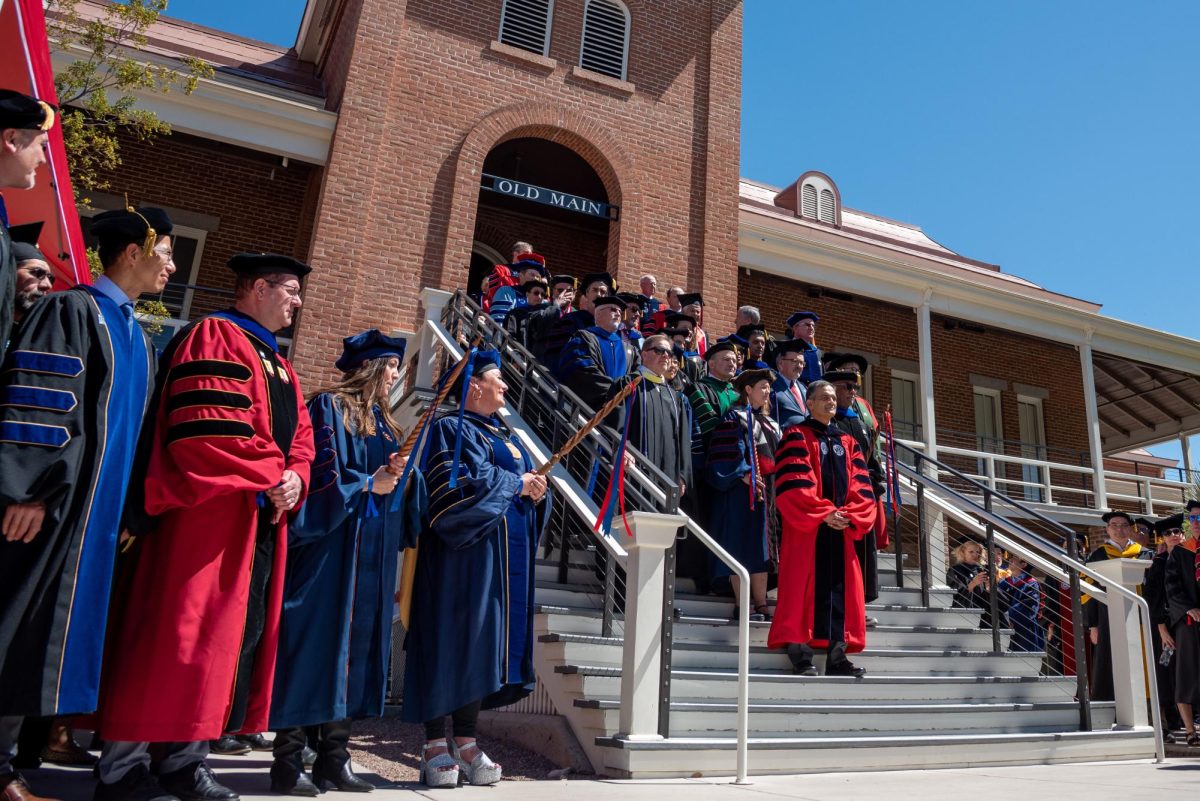Strategic realignment and possible privatization were heavily discussed at the meeting of the UA Faculty Senate on Monday.
UA President Robert Shelton also spoke on redefining the state universities’ relationship with the Arizona Legislature, both in terms of how state funding is allotted and how to determine policies and procedures that affect all three universities.
“”So we can keep on doing what we’re doing, being frustrated, or we can look for a new set of metrics, a new set of funding prescriptions that are based on outcomes as opposed to basically just counting noses,”” Shelton said.
He also addressed the relationship between the state and the universities.
“”What we’re looking at is whether we can redefine and gain more independence, that can be a tricky word, from the state,”” Shelton said, “”not because we don’t love the state but because we think we can make our whole operation here more efficient.””
Andy Silverman, a Faculty Senate member and clinical professor of law, asked Shelton if there was any discussion regarding privatizing any of the UA’s academic efforts. Shelton responded that any discussions were happening internally, and the specifics would not be addressed until they were finalized.
“”I think we do need to look carefully, and I emphasize we, at whether privatization of a college, programs, makes sense,”” Shelton said. “”Isn’t just viable, but makes sense.””
Shelton did acknowledge that the university is looking at privatization and that, in some cases, greater self-reliance was an appropriate course of action.
“”We used to think that if you’re on state dollars, you’re stable, you’re secure, and if you’re on external funding, it could fluctuate … then you’re vulnerable,”” Shelton said. “”Boy have times changed.””
Shelton spoke at length about the working vision for the future of the state’s higher education system. Shelton collaborated with a group he calls the “”gang of four:”” Arizona State University President Michael Crow, Northern Arizona University President John Haeger, and Tom Anderes, the president of the Arizona Board of Regents. They created the “”Arizona Higher Education Enterprise-Strategic Realignment 2010 Forward,”” a report outlining what must be done to achieve ABOR’s educational goals for 2020.
The report differentiates between the three universities, acknowledging both the differences in their student body populations and their modes of operation.
“”There’s a very clear commitment … that the universities need to celebrate and embrace, the board needs to celebrate and embrace, the differentiated missions of the universities,”” Shelton said.
UA’s specific goals include raising the six-year graduation rate from 58 percent to 70 percent, increasing freshman retention rates from 78 percent to more than 90 percent, and increasing the number of students who take “”alternative routes”” to UA degrees from 1,500 to 10,000 at a lower tuition basis.
Other Senate business:
Carla Stoffle, dean of University Libraries and the Center for Creative Photography, gave a presentation on the state of the university’s library system, which she described as positive thanks in part to the increased student library fee. She said that the UA library system was able to avoid additional cuts to its acquisitions budget as a result.
The co-chairs for the 2010 North Central Association accreditation process, Randy Richardson, professor of geosciences, and Beth Mitchneck, associate dean of the Colleges of Letters, Arts and Sciences and associate professor of geography and regional development, presented their briefing document detailing the results of the UA’s self-study report. Their findings concluded that the UA student experience has improved over the last decade.
Several areas were identified for improvement including achieving greater faculty diversity and strategic planning and budgeting, and communicating the UA’s commitment to maintaining and deepening its partnerships.
“”This is a visibility issue, not a quantity issue,”” Mitchneck said. “”It’s there, it’s brilliant, it’s doing great, but not everybody knows about it.””
Mitchneck also lauded the UA’s commitment to engagement and service.
“”What we discovered is that engagement and service is occurring everywhere at this university,”” she said. “”You look under a rock and it’s there.””
The accreditation evaluation team will visit campus in early December.







